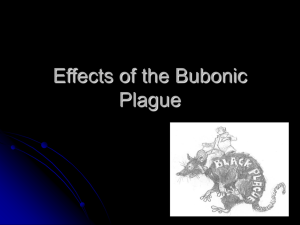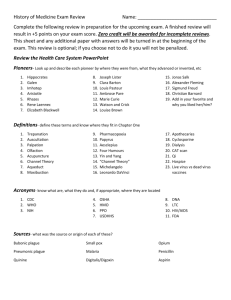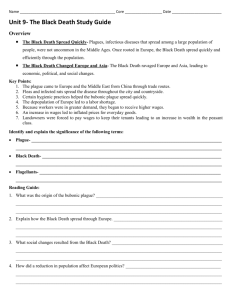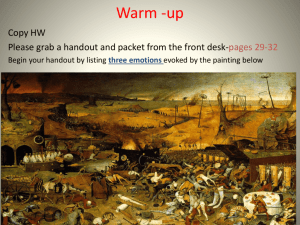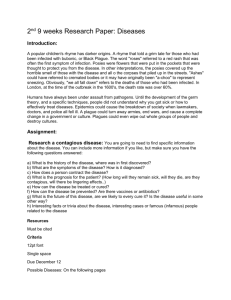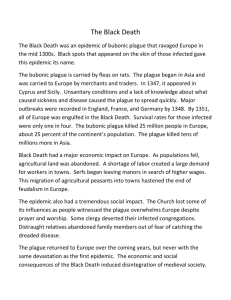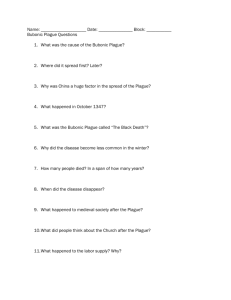Medieval Med Hx - Smyrna High School
advertisement
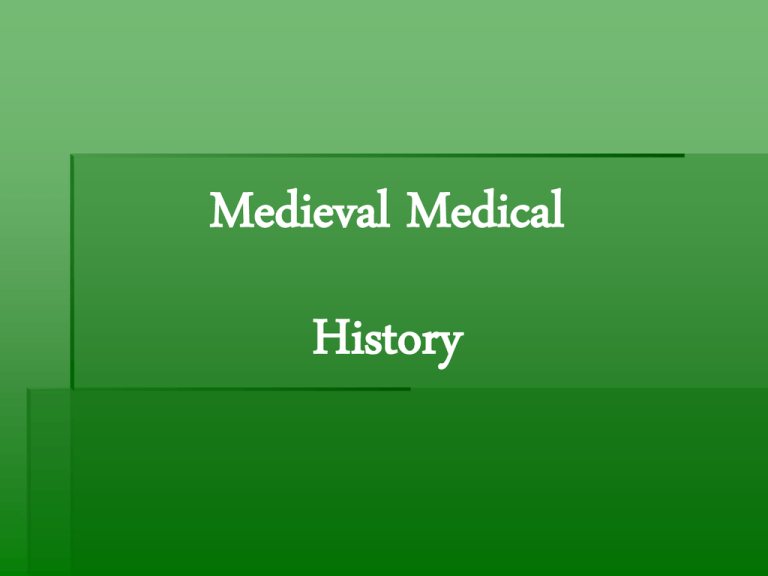
Medieval Medical History th 5 to th 16 Century No progress was made in medical knowledge or practice Blend of Pagan magic and herbalism Anglo Saxons in Britain believed that illness was caused by “nine venoms” Worms Elves Witches Illness treated with charms and incantations In the 6th century, epidemics of smallpox, dysentery, typhus and plague were prevalent due to filth and total absence of sanitation. The Church didn’t foster medical science 391 AD: Religious fanatic mob burned the great library in Alexandria The use of exorcisms and holy relics were to cure the sick. The belief that illness was due to punishment for sins. Priests again became healers Arabs Medical Knowledge Moslem Arab Empire extended from Spain to India Medicine began a revival due to Arabs curiosity Learned much about epidemics Four major teaching centers The Arab’s major medical contribution was chemistry and pharmacology. Rhazes The Arab Hippocrates based diagnosis of disease upon observation . Wrote over 150 books/ medical encyclopedia His major contribution was distinguishing smallpox and measles. Rhazes (ad 865- c.925) was credited with using animal gut sutures. The major surgical instrument was the cautery, which was a red hot iron used to burn out poison. This was VERY painful, disfiguring and often fatal By 850 AD and outstanding medical school was in Salerno. By the 12th century it had highly organized curriculum upon which students were examined and issued degrees to become the first doctors Medieval European surgeon’s practice was limited to nobility, high clergy and wealthy merchants. Other patients were treated by ignorant barber/surgeons. Typhus was flourishing due to the custom of wearing the same underclothing which was infested with fleas. Tuberculosis flourished due to poverty and food shortages. Two of the greatest Medieval diseases were leprosy and bubonic plague, probably brought by the Roman soldiers. Leprosy was one of the few diseases recognized as being a result of sins against God. The “Black Death” is bubonic plague. It killed many lepers. Black death was a term used to describe the dark mottle appearance of the corpse due to hemorrhages beneath the skin. It was caused by a bacillus which grew in fleas of infected black rats. The disease was devastating. Signs and Symptoms of bubonic plague were: Headache, shivering, vomiting, abdominal pain, and delirium. Boils on the joints. If left untreated death could occur in 5 days Pneumonic Plague affected the lungs and caused death in 3 days. Septicemic Plague which was caused by the direct injection of the bacillus into the bloodstream by infected fleas. Death occurred in as little as 24 hours. Estimated that 1/3 of Europe’s population died from Bubonic Plague There were 4 additional outbreaks before the end of the 14th century Black death was enough to motivate additional learning in medicine
